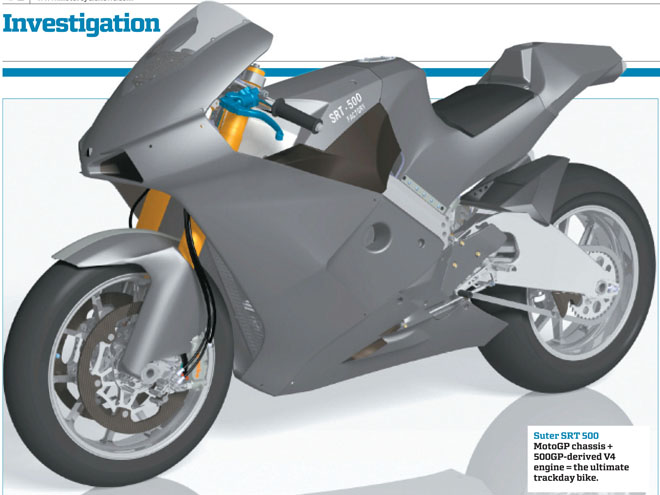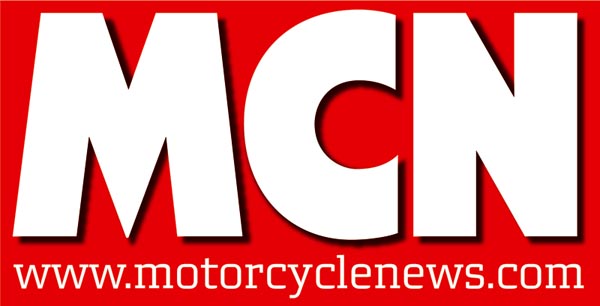KTM has announced record 2008 sales of 25,000 two-stroke bikes and says it sees no end to the high-performance two-stroke. Australian firm Orbital is testing a 200bhp, fully emissions-compliant 1000cc twin that’s lighter and more fuel efficient than any rival four-stroke. Aprilia craves an accessible performance middleweight, says it could easily render its seminal RS250 Euro-3 compliant and has twice already come close to releasing such a bike. R&D departments in Europe, Asia and North America are arriving at the same conclusion: everything you know about two-strokes is wrong, and their revenge against the four-stroke is imminent.
“The complexity of a high-performance four-stroke engine is frightening” says Steven Ahern of Australian engineering R&D firm Orbital, owner of key direct injection patents. “To get power out of a four-stroke you’ve got to go for high rpm, very fancy materials, and you’ve got to sacrifice the torque at low and mid rpm. The customer is the one who has to foot the bill and it’s becoming prohibitive – and they’re getting engines the same vices two strokes used to be damned with.”
Orbital believes the two-stroke is the only engine which gives manufacturers the performance headroom customers will demand – and experts agree that none of the traditional two-stroke vices need apply. It’s only a matter of time before the truth shows through the four-stroke greenwash, says Denver Lawson, who as R&D consultant to China’s vast Jialing Motorcycle Company is designing a wave of new direct-injection two-stroke motors: “What the world wants is efficiency. And whether it’s efficiency or performance you want the fact a four-stroke wastes two strokes is a big issue. It’s not going to be a case of riders having to be convinced about two-strokes again, the world’s going to demand those wasted strokes back.”
Emissions laws dealt a mortal blow to the performance two-stroke in the seventies and eighties, but it’s something other than technical realities that have kept the lid on the coffin, according to Dave Blundell of Lotus Engineering: “Any two-stroke can be made clean enough to pass current emissions standards thanks to Orbital’s air-assisted injection. But manufacturers have invested unimagined billions in four-stroke and they’re very happy for people’s prejudices about ‘dirty, peaky’ two-strokes to remain.”
Orbital’s air-assisted direct injection technology (ADI) separates oil and fuel, keeping oil out of the combustion process and surrounding the fuel vapour in a plume of air which allows clean combustion in the short time the two-stroke cycle allows. The injection of the charge happens after the exhaust port is closed, so none is lost, and because the air injection is so effective at atomising the fuel, injector pressure can be lower – meaning the injector themselves can be cheap; far cheaper than the diesel injectors in your car which run at up to ten times the pressure. Orbital’s computer-controlled ADI cuts oil consumption by 80% and fills out the two-stroke’s torque curve to four-stroke-beating levels. It also dramatically reins in fuel consumption, as Mike Ambler – project leader in Aprilia’s engine department when the firm secretly tested ADI on its RS250 – remembers: “The ADI-equipped RS was so efficient that it could run on the tailpipe emissions of the regular RS250 at idle”.
Dyno comparision – 450 two stroke vs. 450 four stroke.
Tomorrow’s two-strokes on the dyno
Future two-strokes will have capacities on a par with four-strokes, allowing a milder state of tune than that which earned them their peaky reputation. The result trounces the four-stroke for power, torque, flexibility and even service intervals says Orbital – whose experimental (and under-developed) 450cc single-cylinder two-stroke produced these curves against a rival 450cc four-stroke. The stroker also proved smaller and lighter, cheaper to build, less thirsty and with identical emissions.
Orbital earns royalties on every ADI-equipped engine produced, and spent the nineties and early 2000s focusing on mass-market small-capacity utility machines and courting automotive firms. But it’s since entered into partnerships with high-performance bike manufacturers it says will bear fruit soon. Big fruit: “We’re testing a 1000cc engine with performance up to 200bhp and 118lb-ft per litre with performance anywhere and completely emissions compliant” says Ahern.
Who those partners are Orbital won’t say, though an ADI-equipped EXC300 from KTM is strongly rumoured. But what it will say is telling: “Everyone, except Honda, is harbouring significant two-stroke thoughts” says Ahern.
That’s no wonder, says Harald Bartol, two-stroke engineering luminary and technical director of KTM’s grand prix activities: “When I look at two strokes I see only advantages – the power, the weight, the cost and complexity. And the riding dynamics of two-stroke 250s are very close to the 800cc MotoGP bikes. If I were making a sportsbike for the road I would choose a 500cc V4 two-stroke. I have absolutely no doubt it would be superior to the current superbikes, and be possible with existing legislation.”
It may even happen, as Bartol becomes more and more disenchanted with racing’s four-stroke pogrom: “The technical reasons for the change is nonsense. They are all excuses for a business plan which is coming from Honda.”
It’s a disenchantment that’s echoed outside of racing. Dave Blundell of Lotus: “There are lots of very pro-two-stroke engineers at Honda, and they’ve done incredible work in the field, but within the firm it’s become regarded as disloyal to support two-strokes. Their influence is so massive it’s distorted the truth about the engineering.” The truth which even Honda knows says Aprilia’s Mike Ambler: “That two-strokes can be at least as clean, and more fuel efficient thank a four-stroke – their own benchmark tests with ADI-equipped two-strokes against their best four-strokes proved it.” Orbital’s Ahern: “10 years ago from an emissions point of view two-stroke and four-stroke engines were chalk and cheese. Honda’s marketing department went into overdrive and stayed there.”
With oil and fuel separated, injection computer-mapped and the mixture air-blast assisted, the new breed of two-strokes won’t recognise their smoking, spluttering, peaky forbears. They may not resemble them in capacity either. Orbital now believes two-strokes of comparable capacities to four-strokes, running at a less frenetic pace, offer the best combination of explosive two-stroke power, and flat ’n’ fat four-stroke torque curve.
The combination certainly proved mouthwatering for Aprilia. Mike Ambler: “In 2005-6 we looked long and hard at a 600cc two-stroke in an RS250 chassis. The prototype was slated to have 110-125bhp at 8-9000rpm, and weigh 145kg. That would have been a hot-rod, but in the end it was decided we’d have more chance of marketing a Mana than an RS600DI.” When asked if a clean middleweight two-stroke would bridge the yawning gap in Aprilia’s sportsbike range, product manager Francesco Polimeni replies: “I completely agree. And things seem to be changing in the past 12 months, customers warming up to this type of bike. We are keeping our eyes open so as to pounce on any opportunity that becomes available.”
In the dyno rooms and laboratories of the world’s most advanced centres of R&D – including Britain’s Lotus and Ricardo – the boundaries of economy, performance and flexibility are being pushed with two-stroke technologies. Riders craving their explosive performance are feeding a burgeoning subculture of limited-run old-school strokers. So how long before they go mainstream again? As soon as riders know to demand them says Steven Ahern: “Today more than ever manufacturers are listening to what customers want, not saying ‘we’ve made this, you’ve got to buy it’. They’ve just got to know it’s okay to demand more torque, less weight and better efficiency at lower cost.”
“I’ve ridden the future”
Jeremy Bowdler is the editor of Australia’s Two Wheels magazine and the only man outside Aprilia to ride the RS250ADI – the Orbital-equipped next-generation RS.
“It was Aprilia’s DiTech-equipped [Aprilia’s brand name for ADI] SR50 scooter that first got me thinking about the potential of an RS250. Jeez it was fast. I started pestering the local Aprilia distributors about giving Orbital an RS250 to play with, and eventually they let slip that there was, indeed, a RS. Eventually – after a long and difficult negotiation – I was not only allowed to see the bike, but I was also allowed to ride it. In the carpark. But at least I was riding something that didn’t exist. Officially.”
A long discussion with the guys from Orbital, from sales and engineering, ensured that I would never, ever, ever mention the bike’s existence. So here goes.
With the DiTech system the RS could run on various fuel maps, well before the variable fuel injection maps offered by today’s sportsbikes, and the engineers could build almost any power characteristics into the engine, short of an S-shaped power curve.
“We could have a really soft delivery, say for riding in the rain, or a broad spread if you wanted that. We could even have an absolute bastard peaky engine, with nothing and then a 500rpm powerband. Almost anything is possible,” one engineer commented (and I saw the dyno charts).
The proof was in the pudding. After a couple of laps of the carpark on the stock bike, I started the RS DiTech. Not a puff of smoke to be seen…
The best description I can give is that it felt just like a four-stroke, pulling off the bottom end without any clutch slipping or two-strokiness. The noise was deeper, sort of halfway between a two and a four-stroke but the breadth of the powerband was what really impressed. Just a steady stream of non-peaky power. I was excited. As an aside, one of the engineers mentioned he could triple the range of a four-stroke dirt bike quite simply, without any need for a large tank.
But there was one great regret: Bimota’s VDue. “We could have made that one work,” they said ruefully.
‘We’ve given up on four-strokes’
Leading outboard motor firm Evinrude sells at the premium performance end of the marine market. The firm abandoned four-stroke development after discovering direct injection offered their 25-300bhp two-strokes more power, better economy and less weight. They’re also emissions compliant to projected Euro 2010 standards. Spokesman Mike Loach says: “There’s a place for four strokes – doing the dull jobs. They’re bloody heavy and don’t give the power or the torque of the two-strokes. We believe two-strokes are simply better and people who try them quickly agree”. But Loach warns that the four-stroke mafia loom large: “The misinformation that’s spread about two-strokes goes right up to government. It’s a serious threat to our business, and we have to confront other manufacturers’ propaganda all the time.”
Two-strokes at the cutting edge
Lotus and Ricardo (architects of BMW’s K1300 engine) both have flagship two-stroke engines on the test bench. Lotus’ 500cc research engine Ominvore has a moveable ‘puck’ at the top end which it uses to alter the compression ratio, allowing it to run optimally on any fuel. It also features Orbital ADI and compression ignition capability – offering leading-edge combustion efficiency that the inherently energy-efficient two-stroke cycle complements perfectly. Early runs have Lotus very excited.
Ricardo’s 2100cc 2/4SIGHT experimental engine is able to switch from 2-stroke to 4-stroke operation. It uses a 2-stroke cycle to meet demands for high torque and 4-stroke for constant-throttle running. In tests the engine has hit 165lb-ft per litre in two-stroke mode…
 Suter SRT500
Suter SRT500
MotoGP/500GP chassis and engine-builder Suter Racing is launching the bike it says fills the gap where a ‘real bike’ should be – for well-heeled trackday addicts. Pitching it as the ‘two-stroke Desmosedici’ – a factory GP machine for public – the bike will feature a new injected 500cc V4 producing over 200bhp, in an evolution frame based on the gorgeous Ilmor X3. Counter-rotating crankshafts will kill vibration and gyroscopic resistance to turning, and customers will be able to spec the bike up from a EUR50,000 base level to EUR90,000 to include carbon wheels, WSB forks and full titanium exhaust. According to boss Eskil Suter the bike will be: “Powerful but easy enough for everyone to ride – until you try to squeeze the last few seconds of laptime out of it”. Traction control will not be necessary: “If you have a nice torque curve and throttle connection you don’t need it. It’s more for bikes with damaged torque curves, like highly-tuned four-strokes.”
Stefan Pierer KTM
KTM
The fully Euro-3 compliant Austrian firm sold 25,000 two-strokes last year (40% of its total), says other firms were wrong to give up the technology and can’t rule out a sportsbike stroker. Stefan Pierer, CEO: “We have never let up on the development – the potential is by far not exhausted.” Spokesman Thomas Kuttruf expands: “We cannot see an end to two-stroke developments, and we intend to develop the 2-stroke advantages further. In terms of efficiency, weight and complexity you have to consider the 2-strokes in general for future sports projects, on and off-road. We have people in R&D who believe they can make them cleaner than four-strokes”. We’re expecting an Orbital air-assisted direct injection, torque-laden EXC soon.
Jialing / Mira
China’s state-owned giant Jialing Motorcycles has contracted New Zealand engine R&D firm Savice to develop a suite of new direct-injection sub-250cc two-strokes designed to leave Europe and Japan’s rivals feeling heavy and flat. And the deal is a two-way street, with Jialing manufacturing Savice’s line of Mira-branded two-stroke bikes (www.miramotorcycles.co.nz) with further projects already sketched out, taking advantage of Jialing’s huge economies of scale. Managing Director Denver Lawson says: “We’ve got a 1000c two-stroke V-twin modelled (dyno chart shown) that’s good for 22obhp while still running Euro-3 compliant, a 62bhp 125, a completely new technology diesel two-stroke scooter engine, new piston designs allowing us to run up to 11,000rpm, split intakes… There’s a lot going on,” Of the v-twin 1000 Lawson promises “A turn-key V-Due”.
Aprilia SR250
Aprilia
The Italian holder of 33 two-stroke world-titles has twice since 2000 come close to reviving production of its iconic RS250. First as an air-assisted direct injection 250, and again in 05/06 as a 110-124bhp two-stroke 600. Ultimately it plumped for the safer option of diversifying it four-stroke middleweights, but says the door remains open: “As long as there are customers looking for the fun and the thrill of a 2-stroke engine, Aprilia will continue to meet their demand by developing models, and is keeping close tabs on what it sees as a recent revival of interest in the 250 class. If this trend should be confirmed we will take action. Of course in Aprilia style, that means passion and performance” says product director Francesco Polimeni.
Two Stroke Shop TSS500
TSS RS500GP
Australian firm TSS’s RS500GP is a grand prix-engineered RS250 with a rip-snorting all-new 500cc two-stroke parallel twin between its beams. It costs £10,600 and deliveries begin in three months. Co-founders Steve Rothwell and Wayne Wright (GP engineer to Yamaha, BSL and others) say their 112bhp/60lb-ft motor offers “a fat bottom end, massive midrange and lung-collapsing top end rush” and durability undreamt-of in the stroker’s heyday. Worldwide interest in the bike has astonished the firm. 100 bikes are in build in Oz initially (www.twostrokeshop.com), with agents in the UK and US set to expand production. 90% of buyers are opting for road-legal spec say TSS.






